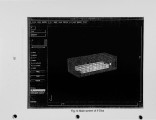| Title |
Application of a Mathematical Modeling to the Development of Low NOx High Temperature High-Air-Preheat Furnaces |
| Creator |
Takei, Masaru; Matsumoto, M. |
| Publisher |
University of Utah |
| Date |
1995 |
| Spatial Coverage |
presented at Monterey, California |
| Abstract |
This paper describes a practical and engineering application of a CFD numerical method to the development of a number of high temperature large scale industrial furnaces. The method is capable of predicting flow, combustion and convective and radiative heat transfer to evaluate the performance of high temperature processes such as steel reheating and glass melting furnaces. It also deals with relatively complex geometry of furnaces so that the design parameters as well as the operating conditions of furnaces are easily optimized. The numerical method has been extensively used for the development of innovative high temperature steel reheating furnaces and forge furnaces equipped with the regenerative burner system. The performance of the furnaces, in particular, the heat transfer characteristics to the steel slabs have been investigated. Due to its switch-over procedure, the regenerative burner system occasionally creates unique heat transfer profiles. The numerical method compares the regenerative burner systems with conventional burner system in terms of heat transfer profiles to the steel slabs. Furnace configuration regarding to the number and location of burners has been optimized to create desired heat transfer profiles. The operating condition of the regenerative burner system such as switch-over mode has been also optimized. Another important characteristic investigated is NOx emission. High-air-preheat temperature causes high flame temperature resulting in excessively high NOx emission. A innovative FDI (fuel direct injection) low NOx combustion flame has been modeled. When combined with the regenerative burner system, the FDI combustion has proved to be extremely effective for NOx reduction. Along with the state-of-the-art numerical techniques, the present method incorporates a userfriendly CAD-like feature. The front end of the program allows interactive input procedure and execution of the calculation. Design and optimization of innovative industrial furnaces are substantially facilitated. |
| Type |
Text |
| Format |
application/pdf |
| Language |
eng |
| Rights |
This material may be protected by copyright. Permission required for use in any form. For further information please contact the American Flame Research Committee. |
| Conversion Specifications |
Original scanned with Canon EOS-1Ds Mark II, 16.7 megapixel digital camera and saved as 400 ppi uncompressed TIFF, 16 bit depth. |
| Scanning Technician |
Cliodhna Davis |
| ARK |
ark:/87278/s6d50qjt |
| Setname |
uu_afrc |
| ID |
7640 |
| Reference URL |
https://collections.lib.utah.edu/ark:/87278/s6d50qjt |























